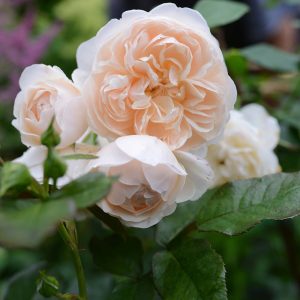Description
Penstemon ‘Firebird’ is a stunning perennial plant that produces an abundance of bright red flowers with white throats, from late spring to early autumn. This plant grows up to 75cm tall and has dark green foliage that complements the vibrant flowers. ‘Firebird’ is a hardy plant that can withstand frost and drought conditions, making it an ideal addition to any garden. It prefers full sun to partial shade and well-drained soil. Deadheading regularly will encourage new blooms, and cutting the plant back in autumn will help it to rejuvenate for the next growing season.
Key Facts
- Common Name(s):Beardtongue ‘Firebird’
- Hardiness:Fully hardy through most of the UK
- How big will I get? Penstemon ‘Firebird’ can grow to a height of 0.8m and a spread of 0.4m.
- Did You Know That:The name Penstemon comes from the Greek words “penta,” meaning five, and “stemon,” meaning stamen. This refers to the five stamens that are present in each flower?
Plant Calendar
A rough guide to how this plant will change through the year.
| Jan | Feb | Mar | Apr | May | June | July | Aug | Sept | Oct | Nov | Dec | |
| Flowering Time |  |
 |
 |
 |
 |
|||||||
| Foliage Colour |  |
 |
 |
 |
 |
 |
 |
 |
 |
 |
 |
 |
| J | F | M | A | M | J | J | A | S | O | N | D |
 |
 |
 |
 |
 |
|||||||
 |
 |
 |
 |
 |
 |
 |
 |
 |
 |
 |
 |
Care Guide

Soil Requirements
Penstemon ‘Firebird’ prefers soil with good drainage and does not tolerate standing water. This plant can grow in soil with a wide range of pH levels, it is not picky about the pH level of the soil.

Best Position
Penstemon ‘Firebird’ can handle either an exposed or a sheltered position and can cope with either full sun or partial shade.

Maintenance
Penstemon ‘Firebird’ should be deadheaded regularly to promote new flowers coming through. This will prolong the flowering period of the plant as it saves the energy that the plant would have put into producing seeds and allows it to produce more flowers! should be cut back after it finishes flowering will promote growth the following year by redirecting energy from seed production and foliage maintenance to root growth.

Pest, Diseases and Wildlife
Penstemon ‘Firebird’ can have problems with slugs and snails, it can be vulnerable to certain diseases such as downy mildew. It is also known to attract bees and butterflies. It is not considered to be toxic.





